Rubber Shod Vehicles
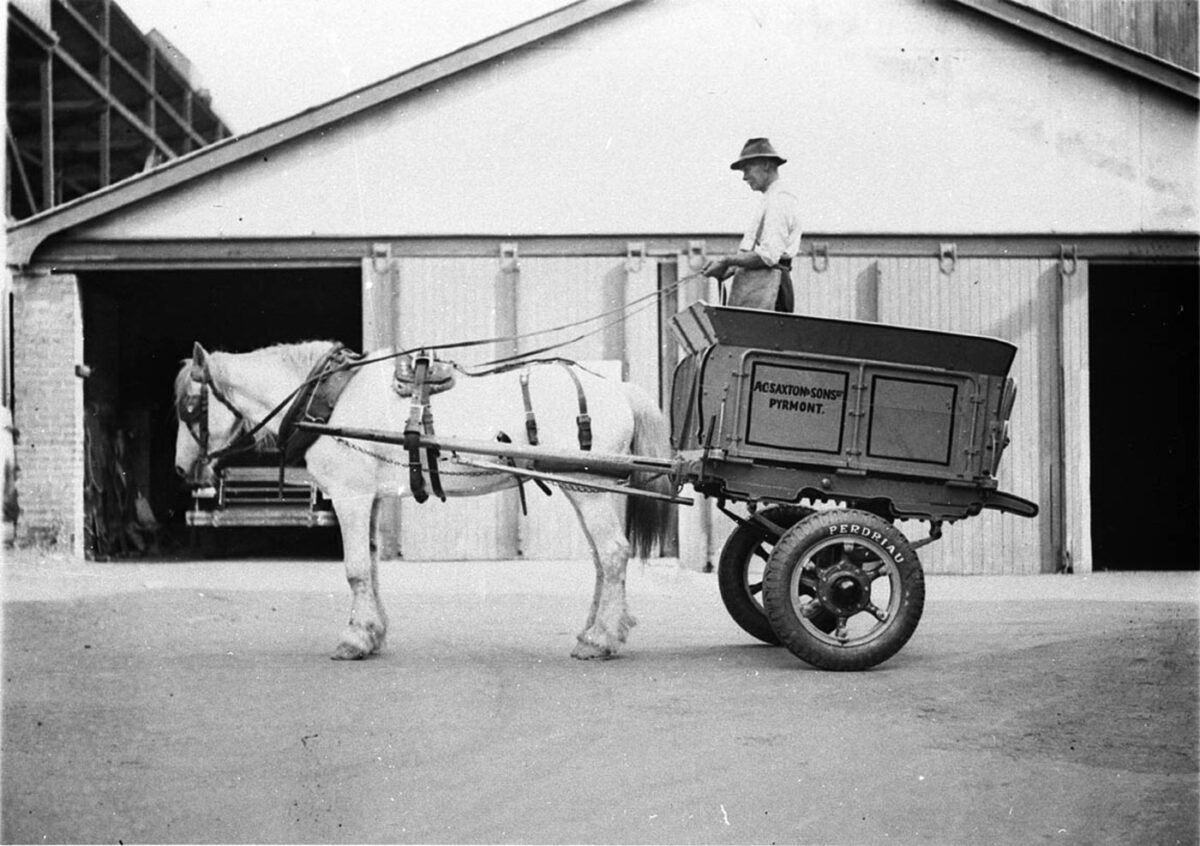
Waler Data Base @ Facebook. Image: Horse drawn tip-cart of A.C. Saxton & Sons with pneumatic tyres. Sam Hood photo, State Library NSW
Horse vehicle trivia… Rubber shod vehicles – the story of an Australian rubber company started in 1885 by Henry Perdriau.
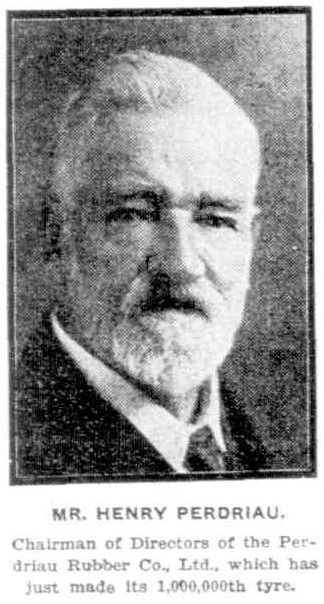
Image: The Week (Bris.) 23rd September, 1927
Henry was born in Balmain, Sydney, where he lived all his life. His Dad had been a ship’s captain – he took Bonaparte to his exile on St Helena – after moving here he saw a need for ferries on Sydney Harbour, so started a ferry to Balmain – building the first, a 60 footer, at Balmain. Huge success. Before long the family had a fleet of ferries.
Young Henry took a trip to England and met a rubber merchant on the ship. He ordered some to try it, the sort for cart wheels and engineering purposes for example on ferries. By mistake, far too much was sent to him, so in his enterprising way Henry put the extra in a little shop in Erskine Street and it sold like hot cakes. It was 1885, so he went into rubber production in case it took off. And to his surprise, it did!
By 1887 he was vulcanising rubber (treatment to make it harder). Nekminnit – 1888 – pneumatic tyres hit the scene overseas so by 1889 Perdriaus were making those too! Less than a year after the first rubber hot water bottle was invented, he was churning out tens of thousands. Ditto sandshoes. Teats for baby bottles. Dolls. Catapults. Tennis balls. Doctor’s gloves. Garden hoses, raincoats, rubber belting for machines and military items such as waterproof tarps (yes most of our rubber in WW1 was from Perdriaus). More items than one can list!
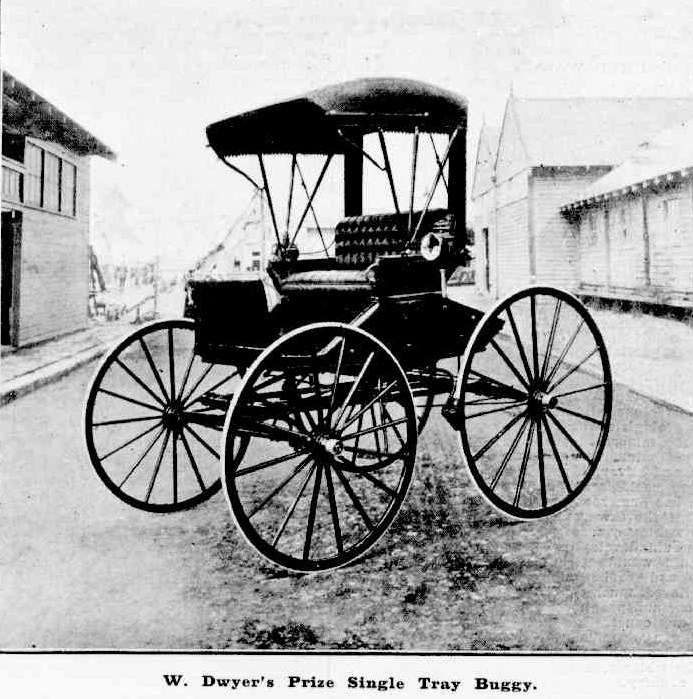
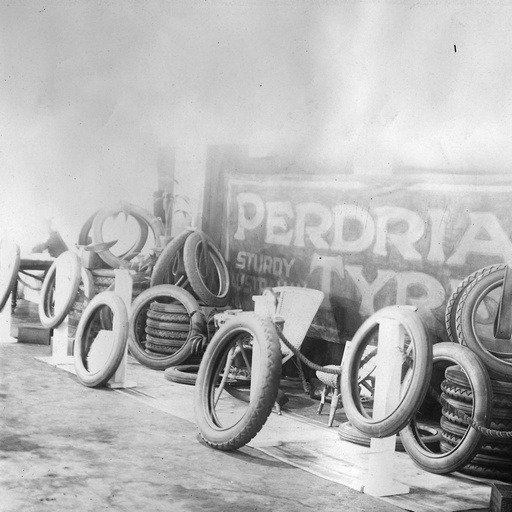
Images: Australian Town & Country Journal, 6th May, 1908; A display of Perdriau motor car tyres at Adelaide Show, South Australia. 1922. State Library S.A.
His factory became huge. Needless to say in the 1880’s and ’90’s there weren’t a lot of cars so making tyres for them was risky – however Henry persevered – and wisely also made them for horse drawn vehicles, ag. implements and motor tractors too.
There was another good rubber producer here, Barnett Glass.
Perdriaus’ were proud their tyres were better than those from the UK and USA. They had more rubber content and more cotton content, and were treated to be very hard, which was demonstrated by them going on the famous Overland car and getting about the outback without bother.
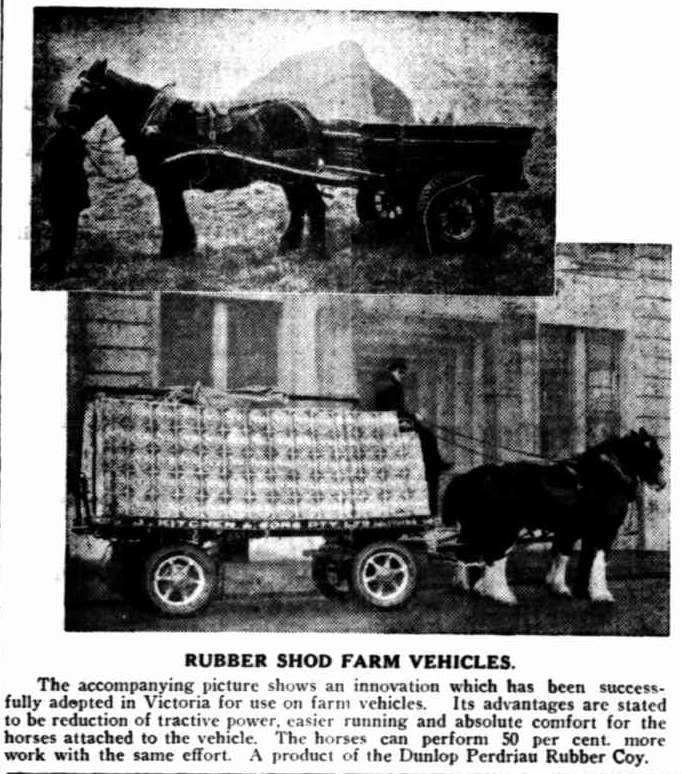
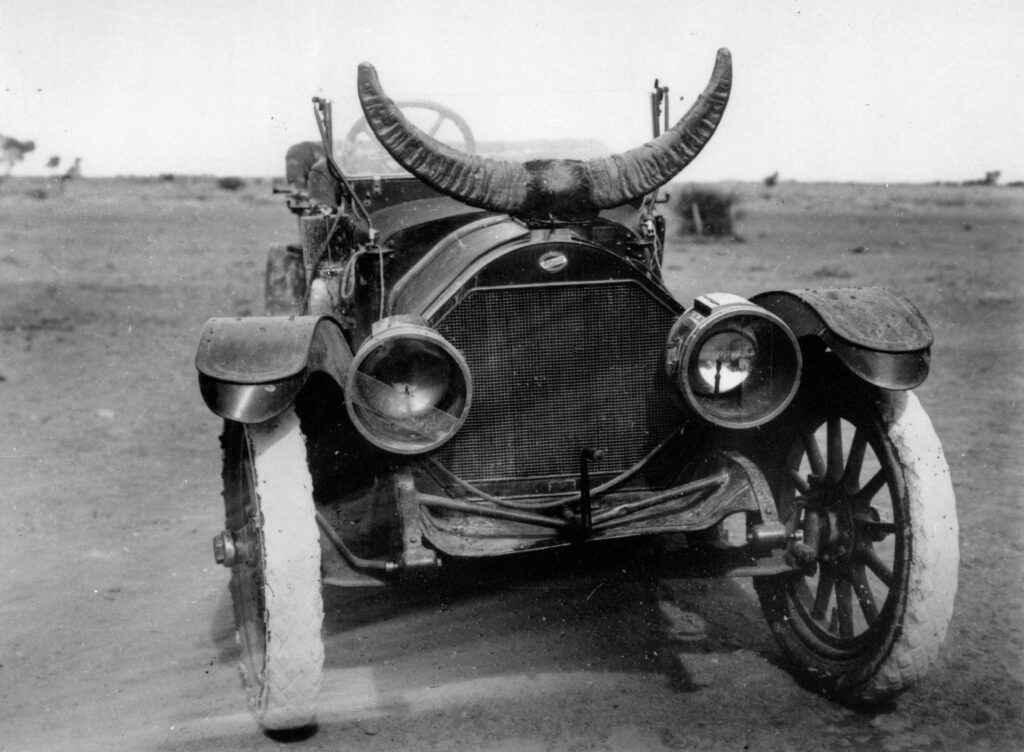
Image: Overland in the outback, possibly Hughenden area, ca. 1915. An Overland manufactured by Willys-Overland, approximate age of the car 1910-1912 equipped with acetylene headlights, pneumatic tyres with patterned tread. State Library Qld
Perdriau tyres achieved fame on these vehicles. The Willey’s Overland was an American make although the body was often made here.
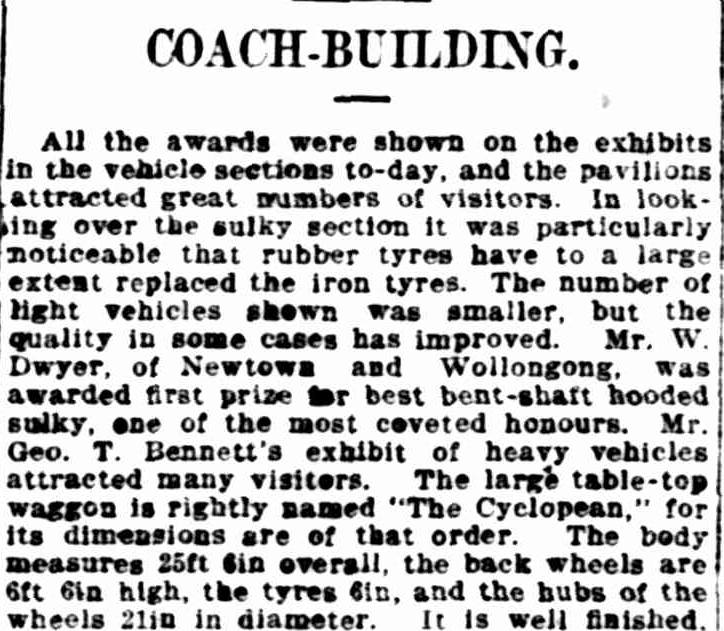

Images: Sydney Morning Herald, 14th April, 1911; Percy Swenson in his rubber tyred sulky drawn by his horse ‘Troy’, Nambour, 1926. Sunshine Coast Libraries. Solid rubber tyres, not inflated. The first inflatables were invented in Scotland in the 1840’s they didn’t take off then.
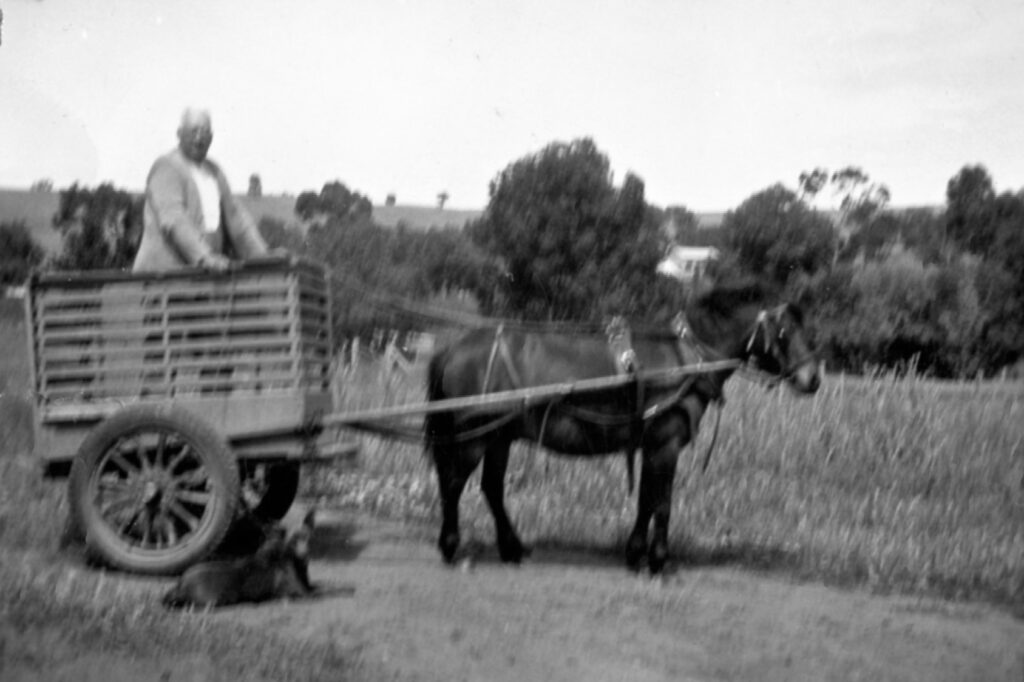
Edgar Martin Perdriau…
on his farm called Parafield, near Wagga Wagga. Edgar was the son of Henry, and managed the rubber factory, as well as running his farm. Nice pony!
Wikitree website
At shows where waggons, carts, sulkies, lorries and all manner of horse drawn vehicles were displayed, not a single order came in that didn’t want rubber tyres once these were known about. These went from a strip of hard rubber around the traditional spoked wooden wheel (which usually had an iron tyre), to pneumatic tyres on modernised wheels made to look like motor car wheels – with less spokes, and often made of iron, with a groove for the inflated tyre.
Rubber tyres cushioned the ride a little, thus the load – but importantly were silent on the streets of cities.
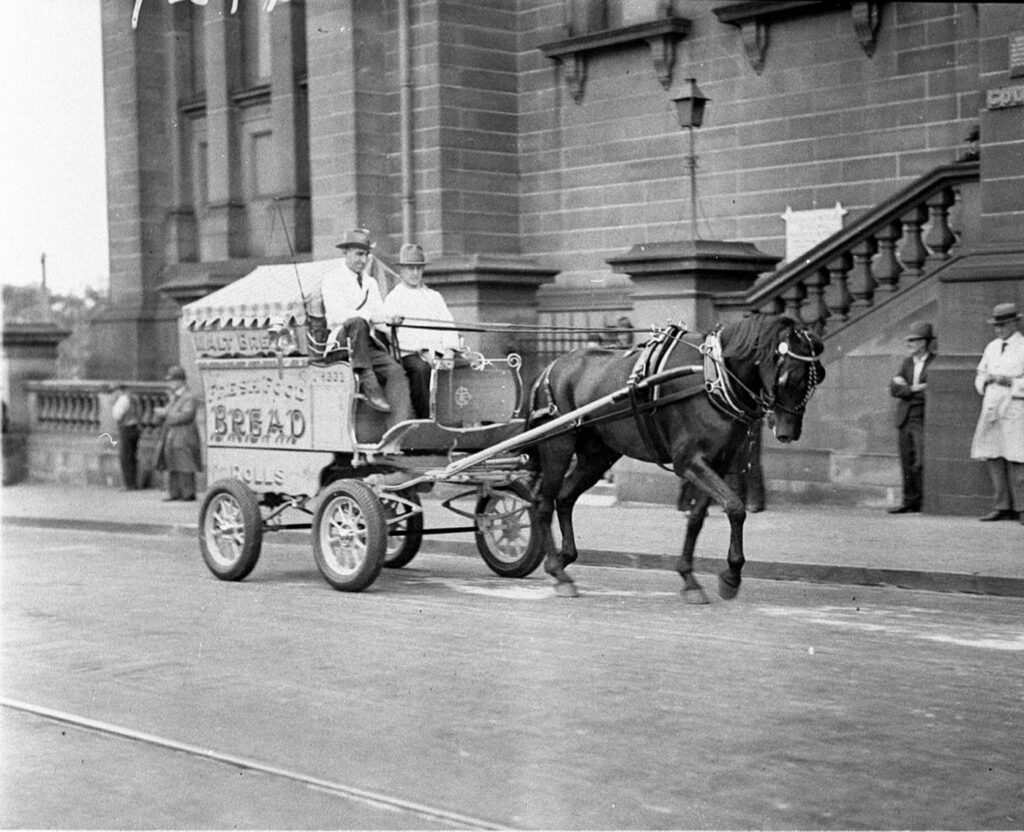
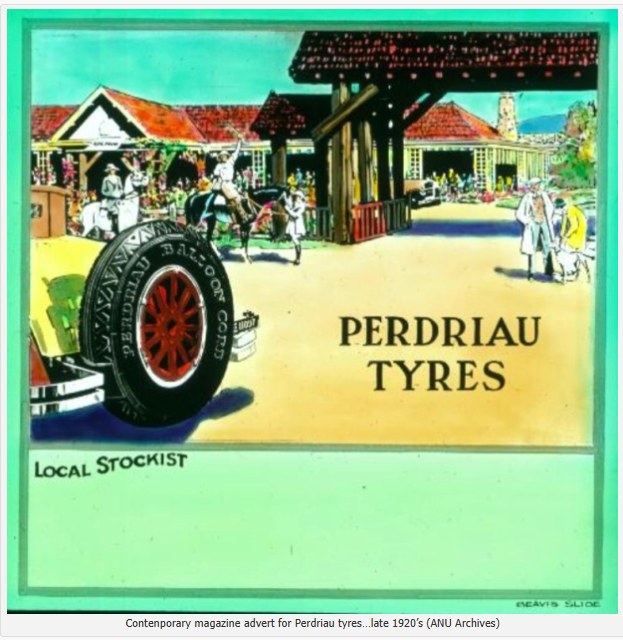
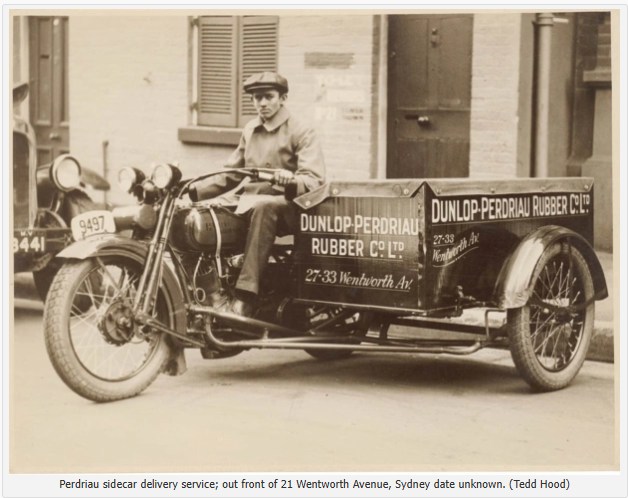
Images: Pneumatic-tyred horse-drawn bread van. 1934. Sam Hood photo, State Library NSW; advertisements of the times.. Primotipo website
The family business flourished until, in 1929, Perdiau went into partnership with Dunlop (originally Irish), a huge company which opened up here in 1897. Henry had retired in 1921. It was the beginning of the end of Australian ownership and manufacturing of our tyres. Dunlop also bought out Barnett Glass’ rubber company.
Henry had also been careful to source his rubber from our Asian neighbours such as New Guinea and Borneo. Some of the family were involved with the rubber factory although had widespread interests; one was a judge (and had been a dispatch rider in the Boer War), his son Edgar who managed Perdriaus had a big farm at Yarragundry where he ran Ryeland sheep, and his grand-daughter Dorothy became a daring pilot – Perdriau, struck by the new fangled airplanes, made sure his rubber was hard enough for them to safely land on their wheels. Dorothy became a pilot!
Henry passed away in Sydney at age 90, in 1935. He’d had several children and there were grandchildren. His favorite hobby was playing lawn bowls.
Image: Perdriau biplane flying over the Brisbane River, Queensland, 1920. The biplane belonged to the Perdriau Rubber Company of Sydney which was involved in experimental flights. The plane was piloted by Lieutenant Butler. This was the first direct flight from Sydney to Brisbane, and took 7 hours, 29 minutes. State Library Qld.
Cheeky Lieutenant Butler also did a loop the loop for onlookers!
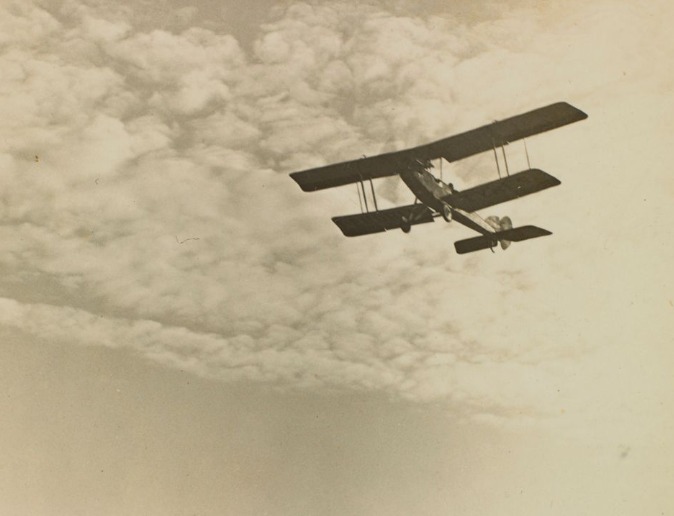
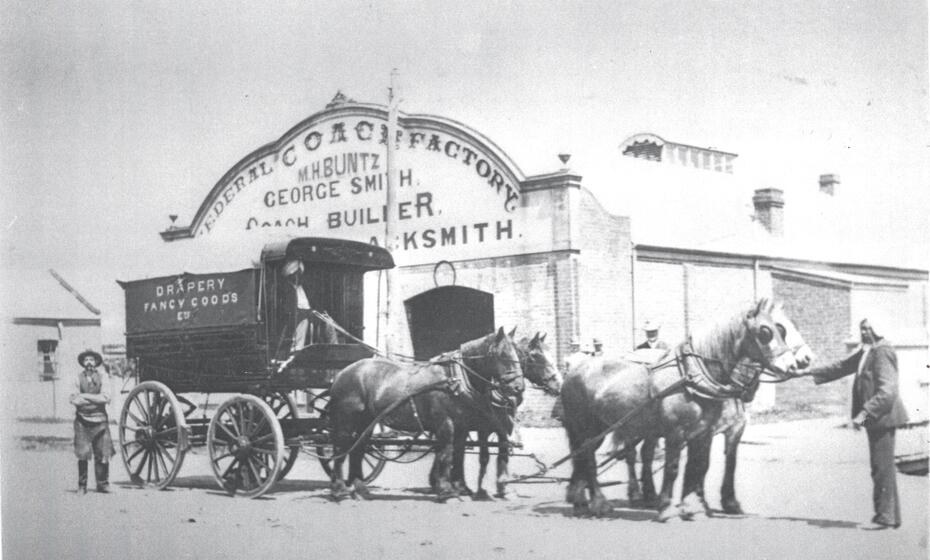
George Smith came to Wodonga c.1885 and carried on a business as a blacksmith and wheelwright in Hume Street. He subsequently erected the very substantial Federal Coach Factory in High Street. In 1901 the Coach Factory was sold to Mr C. E. Jones, but within three- or four-years George Smith again found himself in the establishment he had built.
‘In 1907/8 Marcus Buntz partnered by a G. F. Simpson took possession of the Federal Coach Factory. In 1912 Buntz bought out the interest of Simpson and engaged a first-class wheelwright to do the woodwork. In 1912 a buggy could be had from £40 and a sulky £18. The business over many years developed from a shoeing forge and wheelwright business to a more modern day garage, keeping abreast with mechanisation. Marcus Buntz was joined in the business by his three sons, George, an A grade mechanic, Edward an auto-electrician and Henry, a blacksmith’s striker. The sons eventually took over the garage and handled both coach building and general service work….’
Image and text: Buntz – Federal Coach Factory, Wodonga. Victorian Collections.